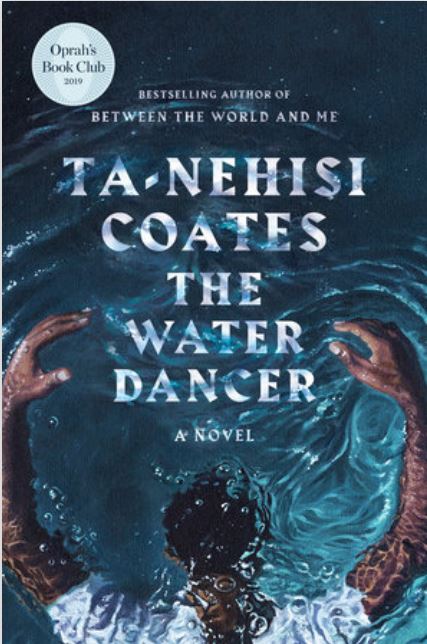
Water Dancer – Ta-Nehisi Coates
One in a series of reviews contributed by Chancellor Dwight C. Watson
“A door had opened. The land had folded like fabric. Conduction, Conduction, Conduction.” To read The Water Dancer, you must unleash your ability to be tethered. You have to escape former notions of the Underground Railroad and Harriett Tubman and move into the realm of the magical, mystical, and the macabre. You can no longer be shackled to a forgone conclusion and must simply give into conduction. “That is conduction. The many stories, the many bridges, the way over the river.”
Hiram Walker, the main character, begins the tale as his mother is taken away and he has to find another home in which to live. Hiram is a slave with nothing more than a memory mostly of his mother as a beautiful woman doing a water-dance with a jug propped upon her head. His mother was the mistress of the master and Hiram is the master’s son. With a resemblance of the master, he is brought into the main house as the caretaker of his half-brother, the legitimate, White, heir of the Virginian Lockless Plantation.
Hiram is notably intelligent, has a savant-type memory of the mundane, but little memory of his own history which is the key to a power that he does not entirely understand. As he learns to use this power, he will escape, be abducted, transplanted, and transformed as he journeys across America. It will also force him to confront his memories and truths about slavery and his life.
Through harrowing experiences and the tutelage from the magical and mythical Harriet Tubman, Hiram is taught to understand his power of conduction. Conduction is the power to teleport through memory and water connectivity groups of people from one place to another. As Hiram conjures his powers, he reflects, “I just sat there watching her in this silence. I felt that she looked different as though the very texture of her story had somehow been etched into her face. The summoning of a story, the water, and the object that made memory real as brick: that was Conduction.”
Ta-Nehisi Coates is exceptional at reimaging the Antebellum South from that of the history books. He categorized his characters as the:
- The Tasked – The slaves who are tasked to work the land either in the fields or in the house.
- The Quality – The slave owners or gentry that live the quality life of pomp, pageantry, and puffery.
- The Lows – The Whites who oversee the slaves. They have no financial power, but simply positional power over the slaves and much disenfranchised resentment toward the Quality.
- The Freedmen – Those slaves who have been granted freedom that still live in the South. In some cases they are better-off than the Lows and are vehemently hated by the Lows.
- Ryland Men – A posse of Lows that capture runaway Tasked, harass the Freedmen, and are the Quality’s hired whipping men (punishment providers for the Tasked).
- The Coffin – Natchez, Mississippi is the deep South where slaves are sold into hard labor and is view as a death sentence. There is little hope of escape, conduction, or reunion after being sent to the Coffin. Only the most powerful and skillful conductors can extract a slave from the Coffin.
The are many aspects of the book that I enjoyed, the most moving part of The Water Dancer was not Hiram’s escape, return to the South, or escape of the people he loves, but the revisionist history or better yet the reimagined history. How Coates weaves in the legendary story of Harriett Tubman and her spiritual powers of conduction gives testament to why she was also called Moses. Like the parting of the Red Sea, Coates captures Harriett Tubman as a water weaver that blend story, prayer, and hope into a tele-portable passage to freedom. The Water Dancer consists of the shared, remembered, and the retold stories of “heroes who did not live in books, but in our talk; an entire world of our own, hidden away in memory.” This collective memory is also part of the power needed to achieve conduction (Quinn, 2019).
Reference: Annalisa Quin (2019). National Public Radio Book Review
Find other works by Ta-Nehisi Coates available from UW-Whitewater Andersen, Lenox and other Libraries. Spring 2020: Yes! You may borrow this book! Use the Drive-Up Library Pick Up link on the library home page.
Learn more about Ta-Nehisi Coates at his official website.
